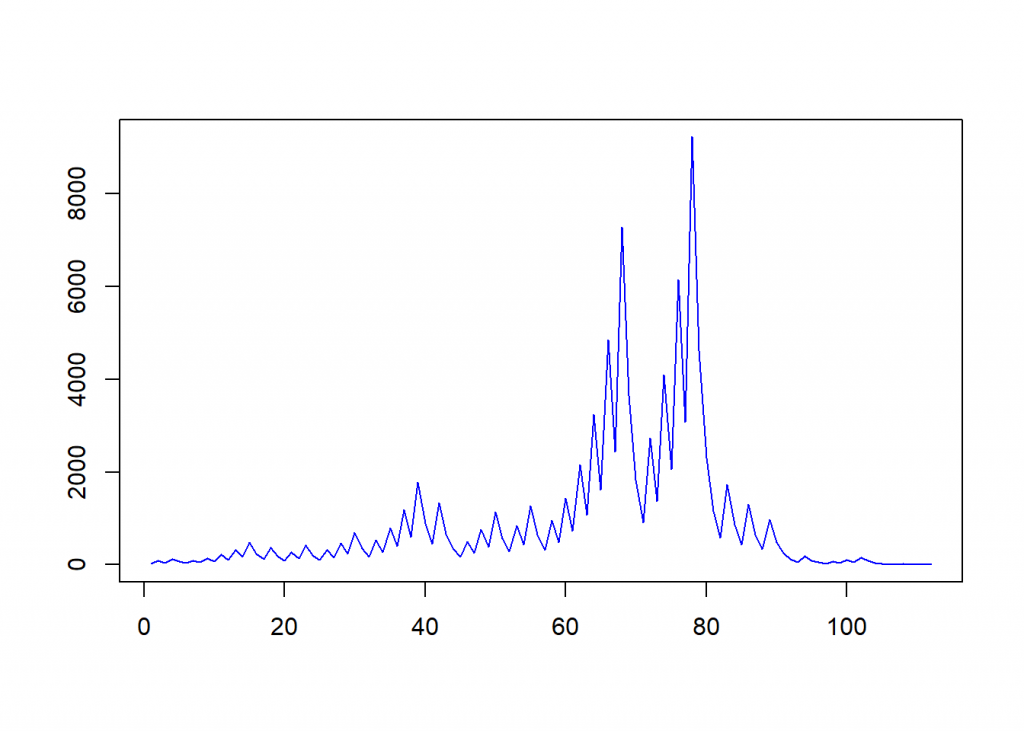
In this post, we will see that a little bit of simple R code can go a very long way! So let’s get started!
One of the fascinating features of number theory (unlike many other branches of mathematics) is that many statements are easy to make but the brightest minds are not able to prove them, the so-called Collatz conjecture (named after the German mathematician Lothar Collatz) is an especially fascinating example:
The Collatz conjecture states that when you start with any positive integer and
- if it is even, the next number is one half the previous number and,
- if it is odd, the next number is three times the previous number plus one
the sequence will always reach one.
It doesn’t get any simpler than that but no one has been able to prove this – and not for a lack of trying! The great mathematician Paul Erdős said about it “Mathematics may not be ready for such problems.” You can read more on Wikipedia: Collatz conjecture and watch an especially nice film that was made by a group of students:
So let us write a little program and try some numbers!
First we need a simple helper function to determine whether a number is even:
is.even <- function(x) {
if (x %% 2 == 0) TRUE
else FALSE
}
is.even(2)
## [1] TRUE
is.even(3)
## [1] FALSE
Normally we wouldn’t use a dot within function names but R itself (because of its legacy code) is not totally consistent here and the is-function family (like is.na or is.integer) all use a dot. After that we write a function for the rule itself, making use of the is.even function:
collatz <- function(n) {
if (is.even(n)) n/2
else 3 * n + 1
}
collatz(6)
## [1] 3
collatz(5)
## [1] 16
To try a number and plot it (like in the Wikipedia article) we could use a while-loop:
n_total <- n <- 27
while (n != 1) {
n <- collatz(n)
n_total <- c(n_total, n)
}
n_total
## [1] 27 82 41 124 62 31 94 47 142 71 214 107 322 161
## [15] 484 242 121 364 182 91 274 137 412 206 103 310 155 466
## [29] 233 700 350 175 526 263 790 395 1186 593 1780 890 445 1336
## [43] 668 334 167 502 251 754 377 1132 566 283 850 425 1276 638
## [57] 319 958 479 1438 719 2158 1079 3238 1619 4858 2429 7288 3644 1822
## [71] 911 2734 1367 4102 2051 6154 3077 9232 4616 2308 1154 577 1732 866
## [85] 433 1300 650 325 976 488 244 122 61 184 92 46 23 70
## [99] 35 106 53 160 80 40 20 10 5 16 8 4 2 1
plot(n_total, type = "l", col = "blue", xlab = "", ylab = "")

As you can see, after a wild ride the sequence finally reaches one as expected. We end with some nerd humour from the cult website xkcd:


Beautiful!!!!!!!
Thank you!!!!!!! 😉
Have a look to https://neonira.github.io/math_cs_1 to get some more in depth understanding of digit mutations when using Collatz sequence.
This post and 5 others are dealing with Collatz sequence. Each of them has been produced using R language, markdown and graphviz.
Hope this helps.
Very insightful, thank you!
Thank you very much for your post about Collatz Conjecture.
I tried it in RStudio, and they all work successfully. What I learned from your programs that, to obtain a wonderful Collatz sequence, there are three steps to do:
Step 1: Makes a function, which can determine a number even(gerade Zahl) or odd (ungerade Zahl). Here remainder operator ( %% ) and if (condition=TRUE)…(Output 1) else ..(Output 2) are applied.
Step2: Applies Collatz Conjecture formula with determined number, to calculate the next number separately according to the Situation (parity). Continuing to use if…else, but the previous function is.even() as a condition I find a tricks!
Step3: The last step is also the most crucial step. Because of this condition ‘n is not equal to 1’, this function completes all calculation of a serial number (that is sequence), which consists of themselves and their next neighbour in the Collatz Conjecture Formula till 1. The sticking Points are while-loop function which runs till the final number 1, and c() function to concatenate all the numbers into a sequence.
The most interesting thing is the numver n itself.
Whether it is even odd, big or small. Just like everyone of us, whether we are man or woman, level of social status or ability high or low. It is changing into another number, through getting and giving, like the energy or warm of the world. At the end, we give all back to our planet: the unique earth we live on. And each number is becoming from one, isn’t it? Every one (life) is an important part of this series of cycles. Each of us plays a role in society and returns to society.
Thank you very much for your Inspiration for us.
Thank you for your great feedback, I really appreciate it.
Hallo ,
I’ve noticed that the sequences:
“Child, Mom, Grandma, Great-Grandmothers” and
Collatz sequence (3n+1)
have the same data structures.
Description at:
https://sourceforge.net/projects/trial-collatz-proof/
Thanks
Thank you, Aleh! Collatz sequences are also often depicted as trees.